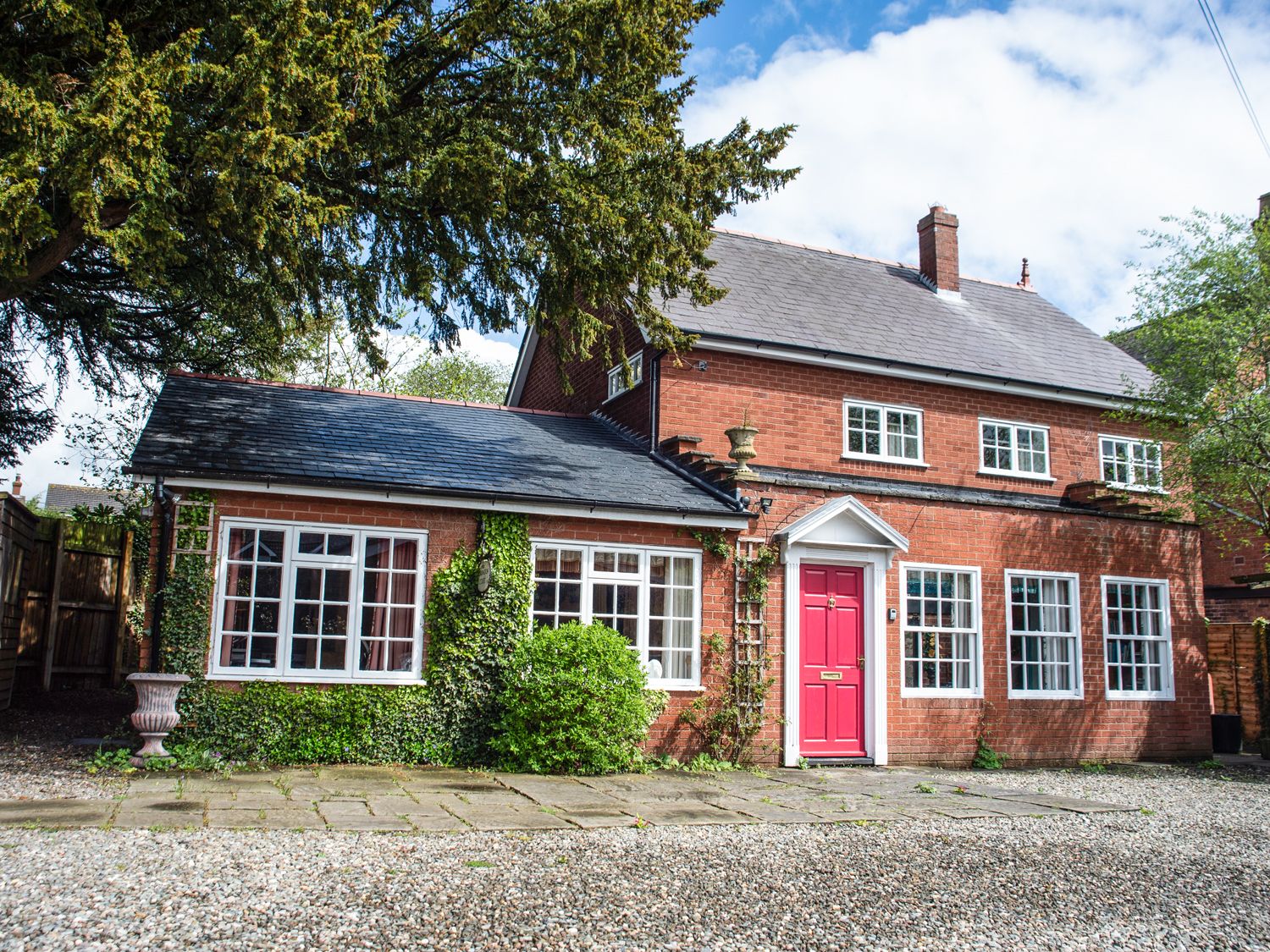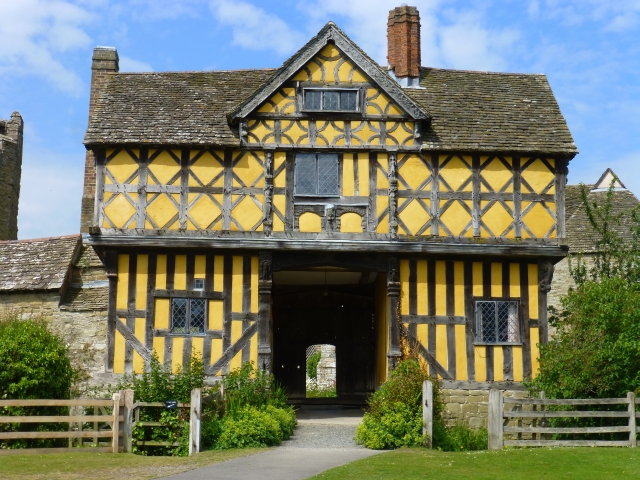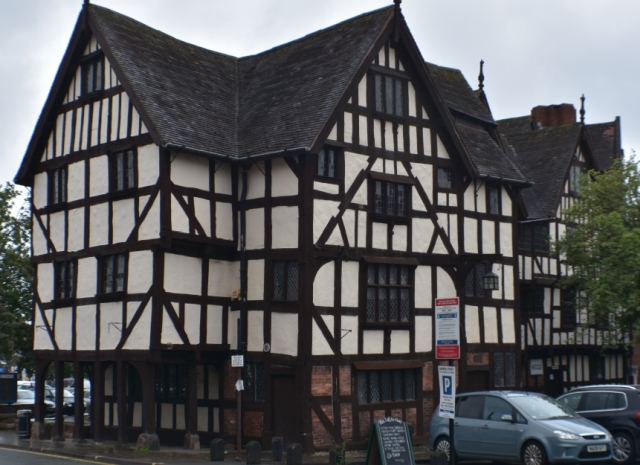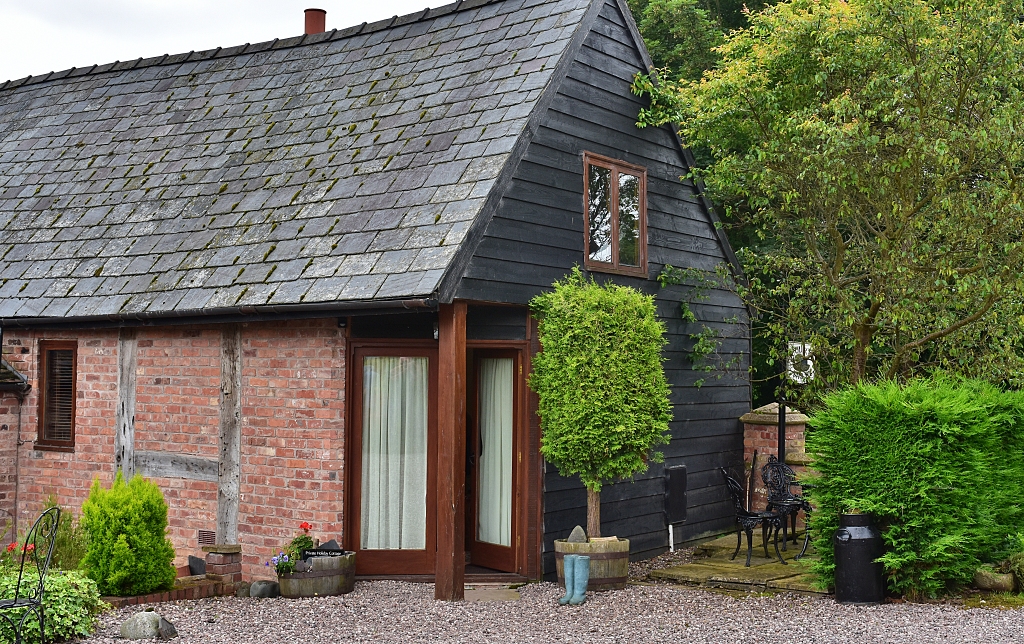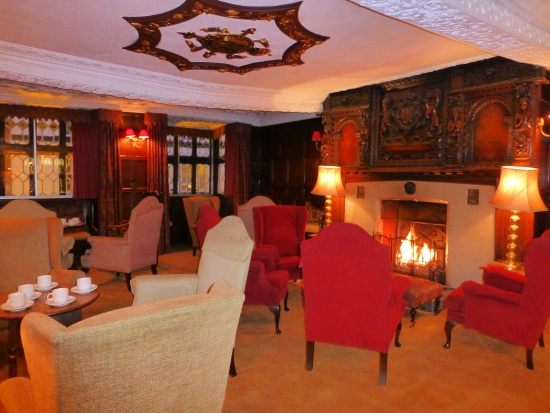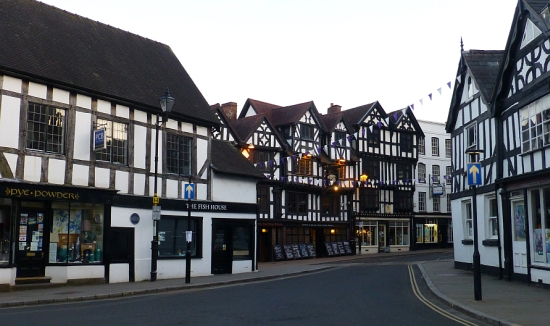Ludlow Castle
Ludlow Castle sits menacingly on the cliffs overlooking the River Teme. Built in the late eleventh century by Roger De Lacy as his stronghold in The Marches border area between England and Wales, it was one of the first Norman castles to have been constructed with stone. The castle was used until the late seventeenth century and has a rich history and varied architecture.
Ludlow Castle - A Brief History
After its early life as a stronghold, Ludlow Castle expanded and mellowed a little as the years passed. In the fourteenth century, the wealthy and powerful Roger Mortimer extended the castle and turned it into a comfortable, grand palace. It later came into the possession
of Richard, Duke of York, and - in 1459, during the Wars of the Roses - it was taken and sacked by the Lancastrians, while the duchess and her younger children were in residence. During the
reign of Edward IV, Ludlow Castle was a royal palace, and his sons, the Prince of Wales and
his brother - better known as The Princes in the Tower - stayed there in 1473.
Around 1475 The Council of Wales and the Marches was founded and became responsible for the government of most of Wales and the English border counties of Gloucestershire, Herefordshire, Worcestershire, Shropshire, and Cheshire. This made the English town of Ludlow the capital of Wales!
In 1501, Henry VII's eldest son, Prince Arthur, died of sweating sickness whilst resident at Ludlow Castle. His wife, Catherine of Aragon, survived the sickness and later went on to become the first wife of Arthur's younger brother, King Henry VIII.
Another royal resident was Mary Tudor, Queen of England, who spent three winters between 1525 and 1528 at Ludlow Castle.
After this time the council was becoming more powerful, employing more people, and requiring more space. This led to extensive modifications to the castle buildings. As it was more of an administrative centre than a royal palace when Ludlow came under siege during the Civil War in 1646, it surrendered and missed being damaged like many other Royalist strongholds. The council was finally disbanded in 1689, and the castle declined to ruin.
In 1811 Ludlow Castle ruins were purchased by the Earl of Powys, whose family have owned the castle to this day.
A Tour Around Ludlow Castle
I’m not sure if the red arrows on the map represent the recommended route around the castle, but it was the way we went, and I found that it left the best to last.
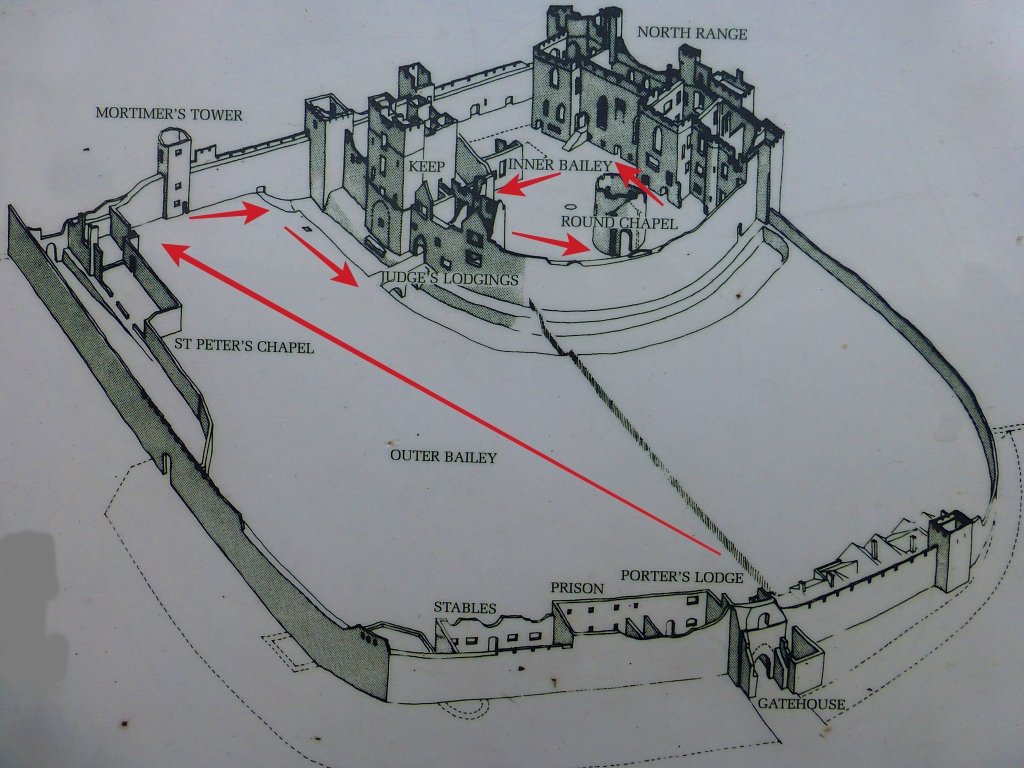 Ludlow Castle Map with our Walking Route (photo of Ludlow Castle information board) © essentially-england.com
Ludlow Castle Map with our Walking Route (photo of Ludlow Castle information board) © essentially-england.comFrom the Gate House, cross the left side of the Outer Bailey towards the ruins of the 14th century St. Peter's chapel. The Outer Bailey covers ca. 5 acres and would have been used for training and tournaments, as well as a means to store supplies. Along from the chapel ruins, you can find Mortimer's Tower, which used to be part of the castle's western gate. A climb to the top will grant you beautiful views over the castle and surrounding landscape.
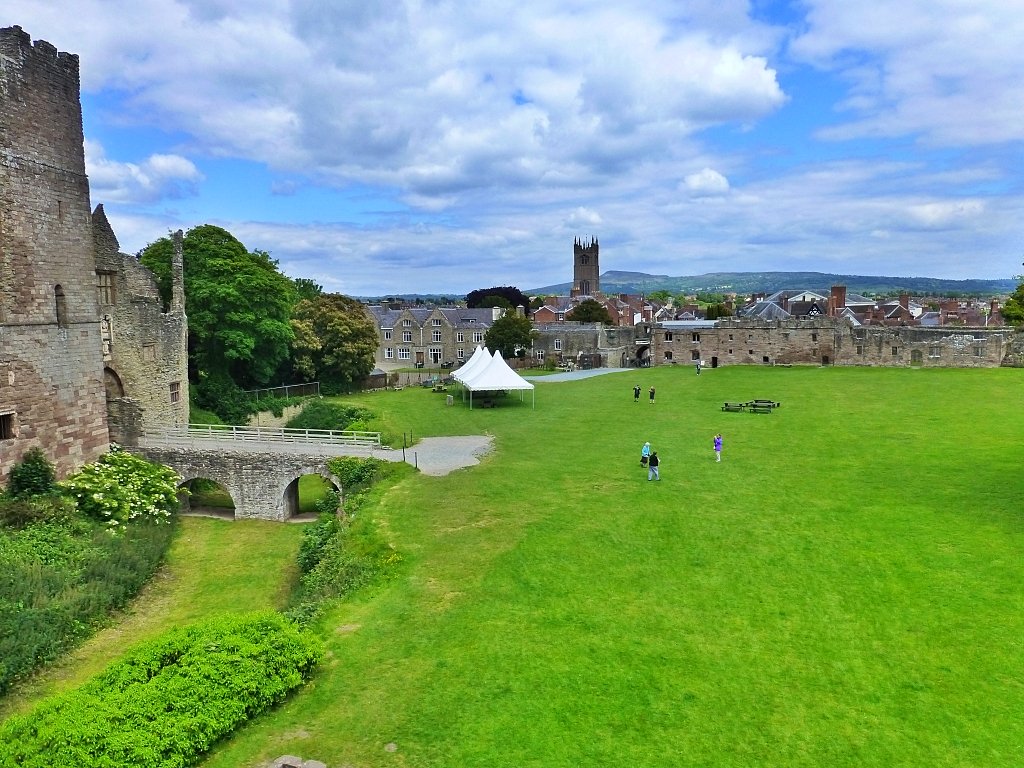 The View over the Outer Bailey from Mortimer's Tower © essentially-england.com
The View over the Outer Bailey from Mortimer's Tower © essentially-england.comDescend from the tower, turn left and walk towards the moat. The stone dug to create the moat was used in the construction of the castle. There are stone steps down into the moat by the castle wall that lead to the Ice House. Over time, this facility has been used to store both ice and explosives. Climb back up to the Inner Bailey and walk towards the bridge to cross the moat.
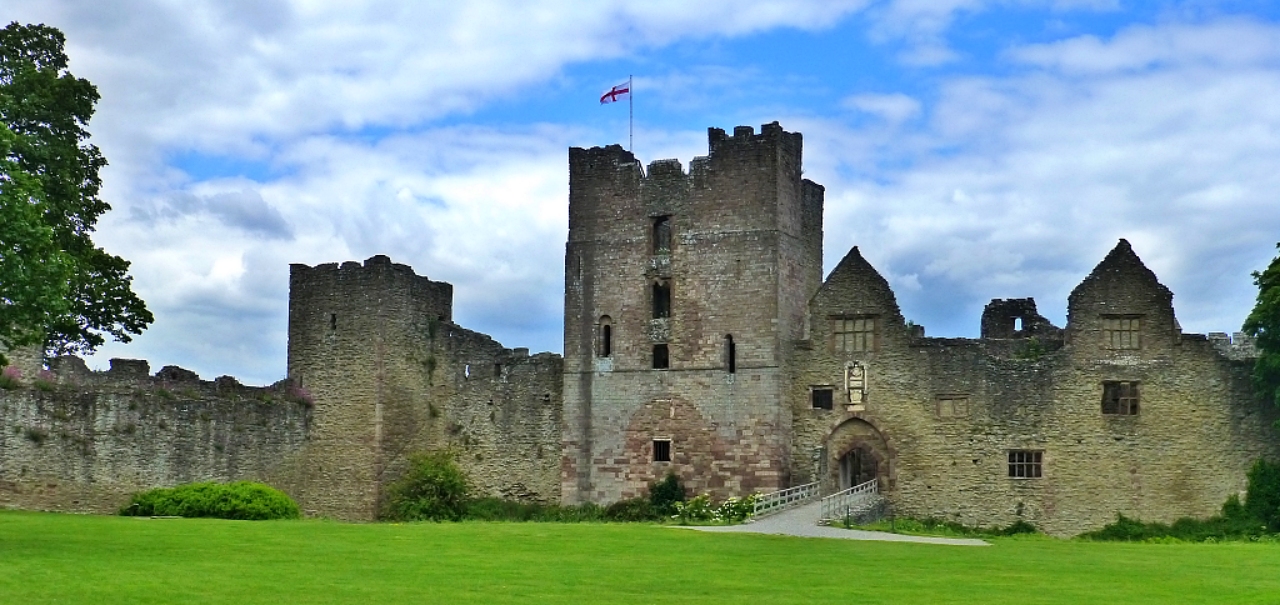 The Great Tower/Gatehouse Keep © essentially-england.com
The Great Tower/Gatehouse Keep © essentially-england.comLooking at the Great Tower you can see where the original arched gateway into the Inner Bailey was. The entrance was moved during the 12th century when the Outer Bailey was created. Note the crest of arms over the gateway. It belongs to Sir Henry Sidney who was president of the Council of Wales and the Marches when the Judges’ Lodgings were finished in 1581.
Walk across the bridge and into the Inner Bailey. The stone bridge is a much later addition. When the castle was first built, there would have been a drawbridge across the moat.
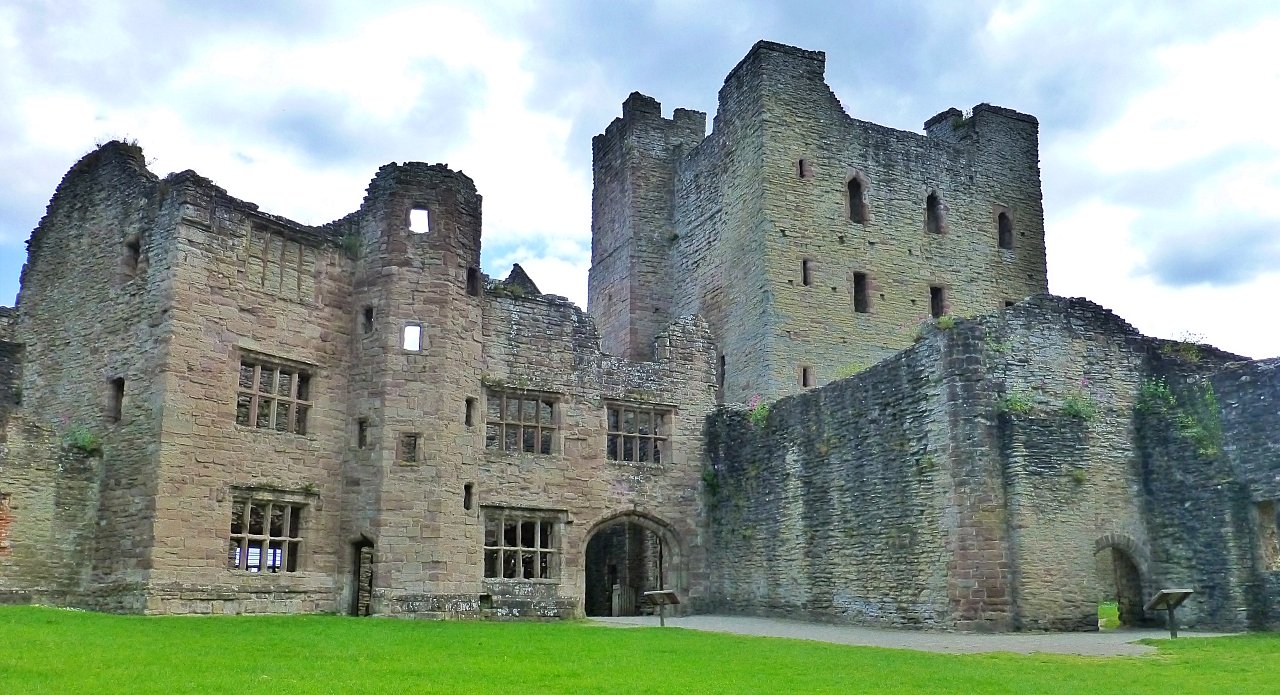 The Elizabethan Judges' Lodgings and Norman Great Tower © essentially-england.com
The Elizabethan Judges' Lodgings and Norman Great Tower © essentially-england.comLook back at the Judges’ Lodgings and Great Tower. They were built around 500 years apart - very obvious from the style of the windows.
The Lodgings have very typical Elizabethan architecture, and although not as grand as the Great Chamber Block, would have been a more comfortable place to live as the rooms were smaller, the ceilings lower, and all had fires.
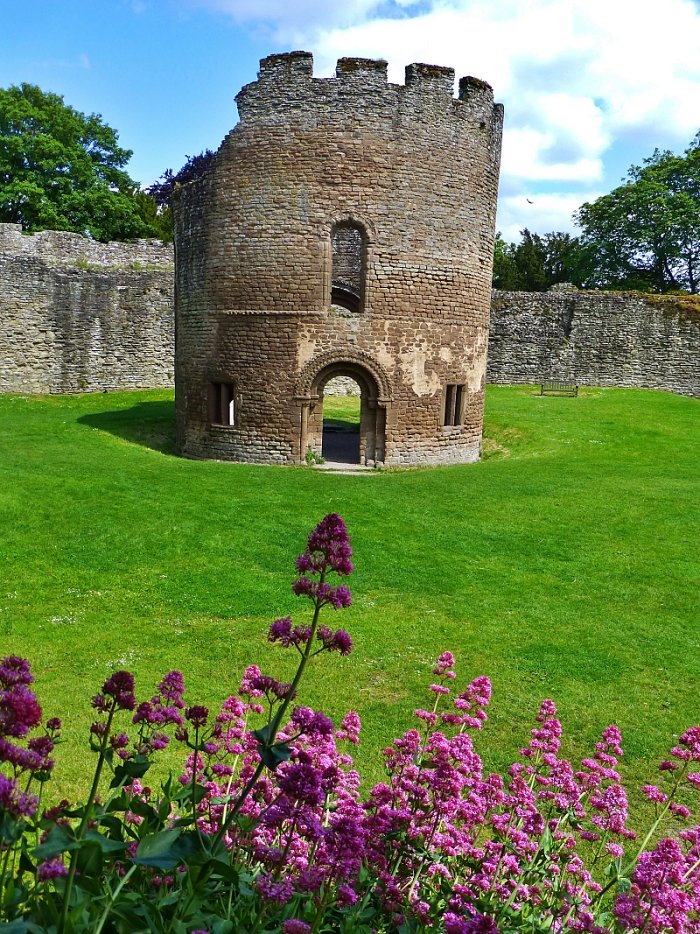 The Round Chapel of St. Mary Magdalene
The Round Chapel of St. Mary Magdalene © essentially-england.com
Now walk over to the beautiful St. Mary Magdalene Chapel.
This is a rare Norman circular nave, that originally had a square chancel. The foundations and old roofline are still visible.
In the late sixteenth century, the chapel was modified to have a second floor so that the rich didn’t have to mix with the poor. New doors and windows were added at the same time.
The North Range - the castle's domestic buildings - are best viewed from above, before exploring inside.
The North Range consists of - from left to right in the photo - The Solar Wing, The Great Hall, The Great Chamber Block, and some Tudor Lodgings. These buildings were started in the late 1200s and completed by Roger Mortimer in the early 1300s. They were remodelled during the 16th century, when the castle was used by the Council of Wales and the Marches.
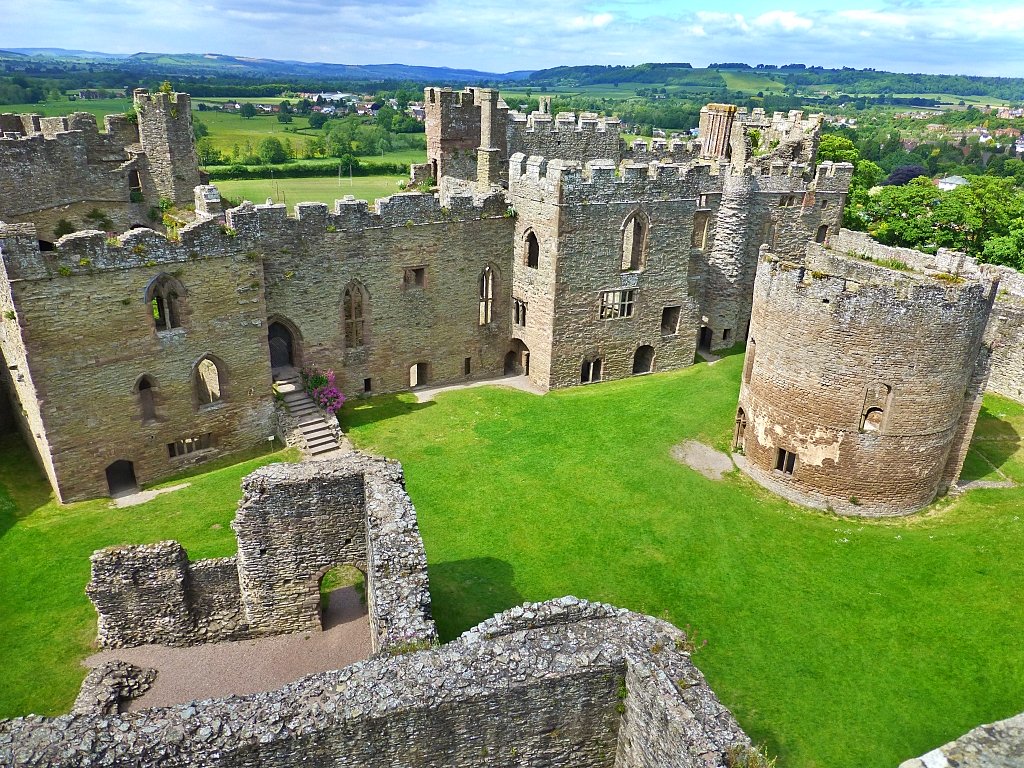 The North Range and Round Chapel at Ludlow Castle © essentially-england.com
The North Range and Round Chapel at Ludlow Castle © essentially-england.comAfter viewing the North Range, wander over to the opposite side of the Inner Bailey to explore the kitchens and well, and then the Great Tower.
The Great Tower has been modified numerous times over the centuries, but this is the last bit of our tour, and as I said at the top, by chance we saved the best bit for last. Climb to the top of the tower for the best views of the castle and the surrounding countryside. On a clear day, you will not be disappointed!
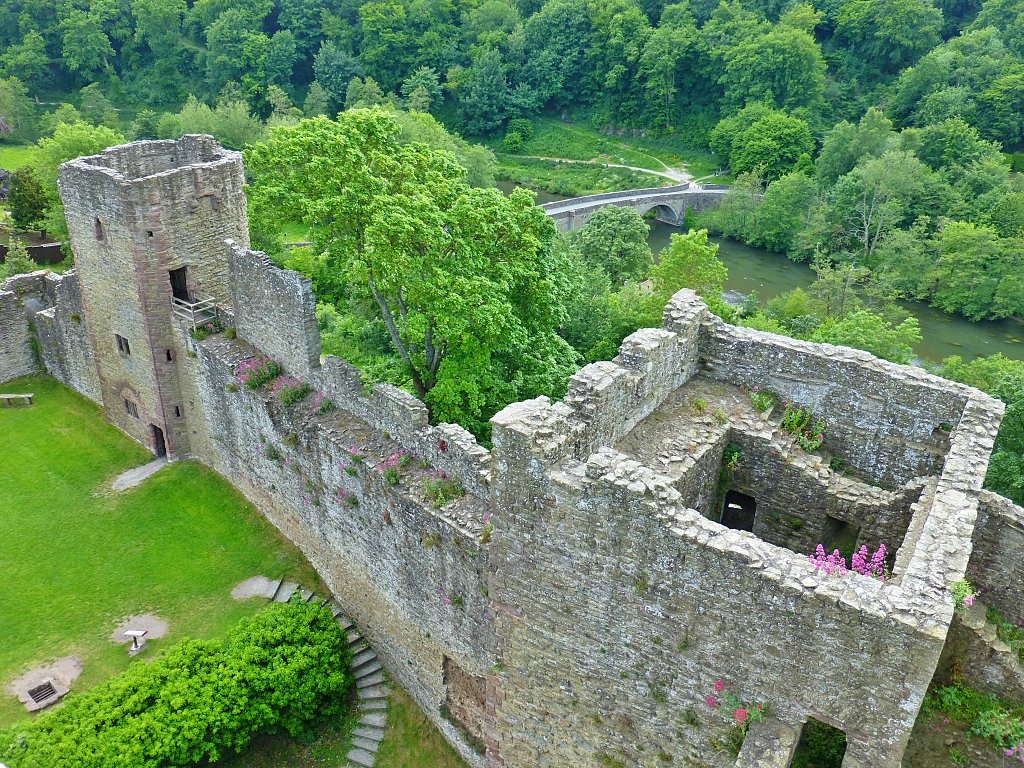 View of Mortimer's Tower, the River Teme, and Dinham Bridge from the Great Tower at Ludlow Castle
View of Mortimer's Tower, the River Teme, and Dinham Bridge from the Great Tower at Ludlow Castle © essentially-england.com
And my final photo...
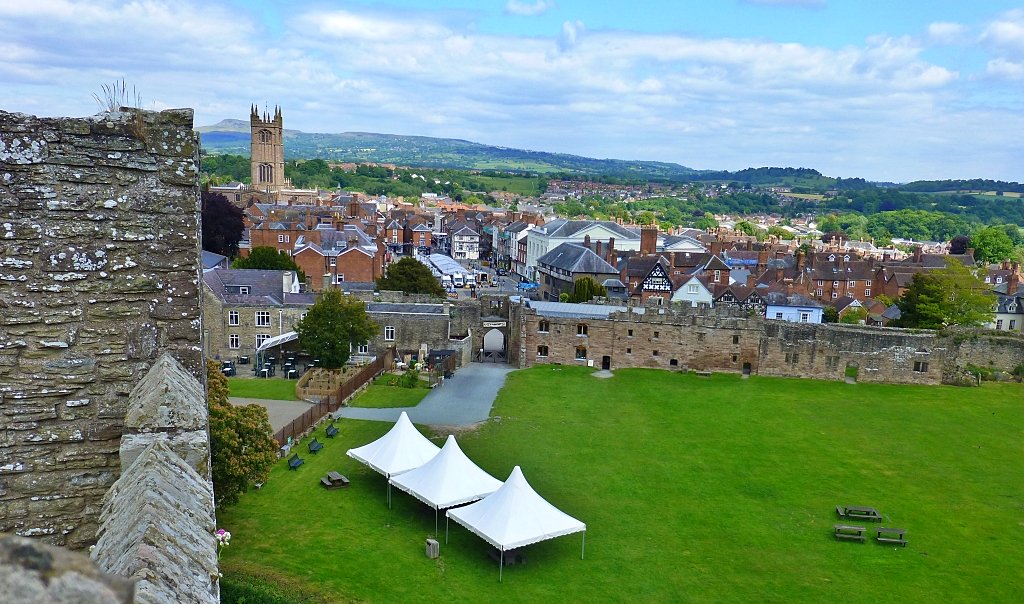 View over Ludlow from the Great Tower of Ludlow Castle © essentially-england.com
View over Ludlow from the Great Tower of Ludlow Castle © essentially-england.comIf you have enjoyed exploring Ludlow Castle with us and would like further information, opening times, and ticket prices, then please visit the Ludlow Castle website here.
We also have also described a nice walk around Ludlow here.
Are You Planning a Trip to Shropshire?
Shropshire is a marvellous place for history and food lovers! There's so much to see and do and taste, that you'll need more than just a short visit. If food is your thing, head to Ludlow and start exploring from there. For history lovers, Shrewsbury makes a great base with many historical sites in very easy reach.
Where You Could Stay
To see more self-catering cottages in Shropshire click here or check out holiday cottages in other parts of England by clicking here.
If you need to find a hotel, then try one of these search platforms...
More hotel ideas can be found on our Shropshire Hotels page.
What You Could See and Do
Here are a few places that should go on your must-see list:
- Wroxeter Roman City
- Shrewsbury and Shrewsbury Abbey
- Attingham Hall
- Offa's Dyke
- Ironbridge Gorge, Ironbridge & Broseley Jitties
- Coalbrookdale Museum of Iron
- Jackfield Tile Museum and the Tar Tunnel
- Blists Hill Victorian Town - a fantastic living museum
- Ludlow Castle
- Stokesay Castle
Click here for a great list of things to do in Shropshire.
To return to our Shropshire page click here.

